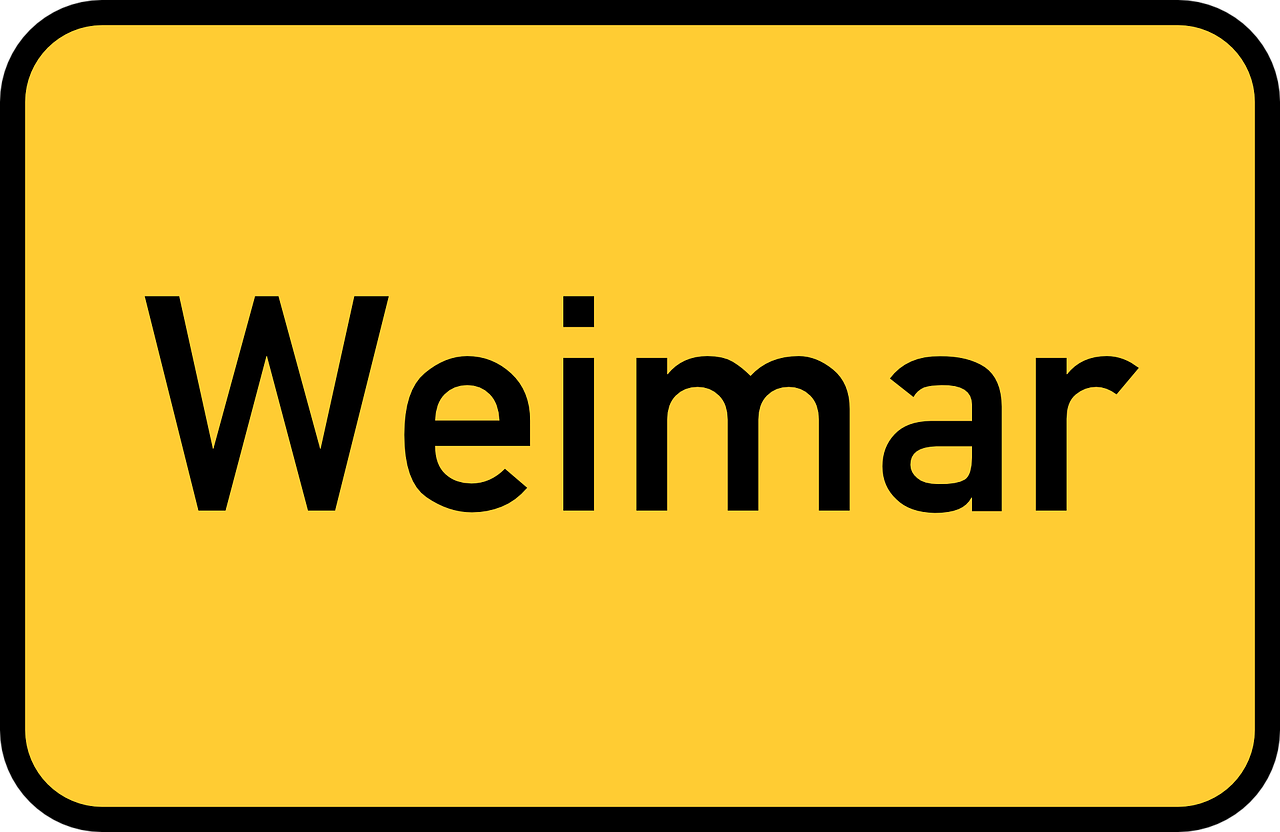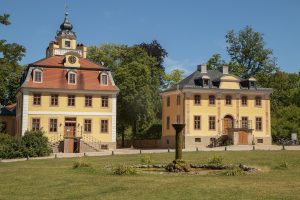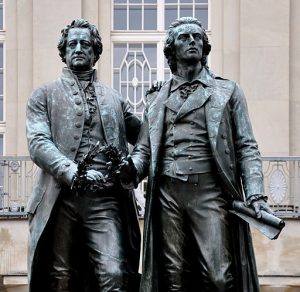9.14: 9.12
- Page ID
- 123642
Einheit 9.12 (online)

![]() Weimar – From Goethe to Gropius. Sehen Sie das Video an und machen Sie Übung 1.
Weimar – From Goethe to Gropius. Sehen Sie das Video an und machen Sie Übung 1.
![]() Übung 1
Übung 1
![]() UNESCO-. The UNESCO selects areas or landmarks that are culturally, historically, scientifically or otherwise significant and declares them world heritage sites. These sites are protected by international treaties. There are 46 World Heritage Sites in Germany (43 cultural and 3 natural).
UNESCO-. The UNESCO selects areas or landmarks that are culturally, historically, scientifically or otherwise significant and declares them world heritage sites. These sites are protected by international treaties. There are 46 World Heritage Sites in Germany (43 cultural and 3 natural).
Today, you will learn something about the “Klassisches Weimar”.


|
|
Wo liegt das “Klassische Weimar” auf der Landkarte? Welterbe in Deutschland
Sehen Sie die zwei Videos an.
Welterbe Klassikerstadt Weimar (Deutsche Welle) (0:59 Minuten; Deutsch)
Weimar – von Goethe bis Gropius (Deutsche Welle) (5:50 Minuten; Deutsch)
![]() Weimar: von Goethe bis Gropius. Lesen Sie den Text und beantworten Sie die Fragen.
Weimar: von Goethe bis Gropius. Lesen Sie den Text und beantworten Sie die Fragen.
![]() Übung 2
Übung 2
![]() Wer war Dr. Johann Faust? Was können Sie über Goethes Drama Faust herausfinden? Recherchieren Sie im Internet. Finden Sie 3 Dinge über Dr. Faust und über Goethes Drama Faust heraus (für die nächste Deutschstunde).
Wer war Dr. Johann Faust? Was können Sie über Goethes Drama Faust herausfinden? Recherchieren Sie im Internet. Finden Sie 3 Dinge über Dr. Faust und über Goethes Drama Faust heraus (für die nächste Deutschstunde).
Weimar: von Goethe bis Gropius Text
![]() Was wissen Sie jetzt? Klicken Sie hier für Quiz 9.12.
Was wissen Sie jetzt? Klicken Sie hier für Quiz 9.12.
Media Attributions
- weimar-856079_1280 © Taken is licensed under a Public Domain license
- play © IO-Images is licensed under a Public Domain license
- star © IO-Images is licensed under a Public Domain license
- 2020-07-31_Schlosspark_Belvedere_by_OlafKosinsky_MG_2752 © Olaf Kosinsky is licensed under a CC BY-SA (Attribution ShareAlike) license
- Weimar_Goethe-Schiller-Denkmal_2012_02 © Andreas Praefcke is licensed under a CC0 (Creative Commons Zero) license
- book © IO-Images is licensed under a Public Domain license
- magnifying-glass © IO-Images is licensed under a Public Domain license
- link © IO-Images is licensed under a Public Domain license
- check mark © janjf93 adapted by Solomon Hajramezan is licensed under a Public Domain license

